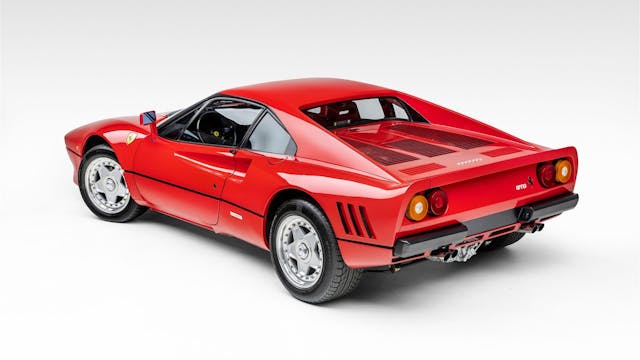Launch Mode: Introducing the Hagerty Supercars Index
The new Supercars Index is an extension of the existing group of Hagerty Price Guide (HPG) indexes. While those indexes start way back in 2006, some of the supercars in this new index were not yet on sale or were still new in showrooms that year. Instead, this index is comprised of 15 supercars and begins tracking their values in 2013. The values are still drawn from the HPG and still use the average condition 2 value, but unlike the other indexes, many of the vehicles in this index can do at least 200 mph.
The 15 supercars span the 1980s through the 2000s. They come from long-established manufacturers and a couple of upstarts, too. There are four Ferraris on the list, including the oldest supercar considered here, the 1984-1985 288 GTO. Also considered are the 1987-1992 F40, 1995-1997 F50, and 2002-2004 Enzo. There are two Porsches: The 1986-1988 959 and the 2004-2007 Carrera GT, and two Bugattis, the 1991-1995 EB110 and the 2006-2013 Veyron, and two Mercedes-Benzes, the 1998-1999 CLK-GTR and the 2004-2010 SLR McLaren. Also considered are the 1994-1998 McLaren F1, 1991-1994 Jaguar XJ 220, and 2005-2006 Ford GT. Finally, the upstarts include the 2000-2009 Saleen S7 and the 1991-1993 Vector W8. Certainly, more modern, exotic, and faster supercars are out there, but an index must reliably show how the market has changed over time. In the case of the Veyron, the most modern example included is the 2013 model year because the data that the index tracks starts in 2013.

What does the Supercars Index tell us about that market? Like any great supercar, there are two numbers that matter: How much and how fast. The “how much” is the current index value of over $3.9 million, which is the average value of those 15 vehicles in the index. The “how fast” is how quickly it got to that number, which is a gain of 326 percent since inception or an annualized return of nearly 14 percent.
How have some of the individual components of the index performed? The Ferrari F40 is one of the most recognizable supercars, but it was worth $744,000 in 2013, based on the average condition 2 value. They’re now worth $3.1 million in similar condition, a 331 percent gain. Its great rival of the 1980s, the Porsche 959, was worth $482,000 in 2013 and they’re now worth $2.7 million (+547 percent). Not all have appreciated quite as quickly: Bugatti Veyron, Saleen S7, and Jaguar XJ 220 are up 57, 110, and 214 percent, respectively. Also, while the McLaren F1 is worth nearly 10 times more than most of the other vehicles in the index, its 346 percent gain doesn’t distort the index’s performance. Omitting it leaves the index up 313 percent over the same period.

What is the outlook for the Supercars Index? With so many supercars launched in the past 15 years, including the hybrid trinity McLaren P1, Porsche 918 Spyder, and Ferrari LaFerrari, these 1980s through 2000s could soon be overlooked. While all of these supercars seem highly collectible today, the steady increases of the index show just how long that’s been true, and it will also help us see how their collectability changes in the future.
***
Check out the Hagerty Media homepage so you don’t miss a single story, or better yet, bookmark it. To get our best stories delivered right to your inbox, subscribe to our newsletters.



I love the analog supercars more than the current ones. 288 GTO, F40, 959, F1, the glory years.
Jay Leno has had his F1 for several years. I wonder what he paid for it. You could have a pretty nice car collection and a building to put it in for that price.
Where are the Lamborghinis? This is the car maker that defined the term supercar. Every V12 Lambo since 1980 should be on this list….Countach, Diablo, Murcielago, Aventagor and all their variants??????